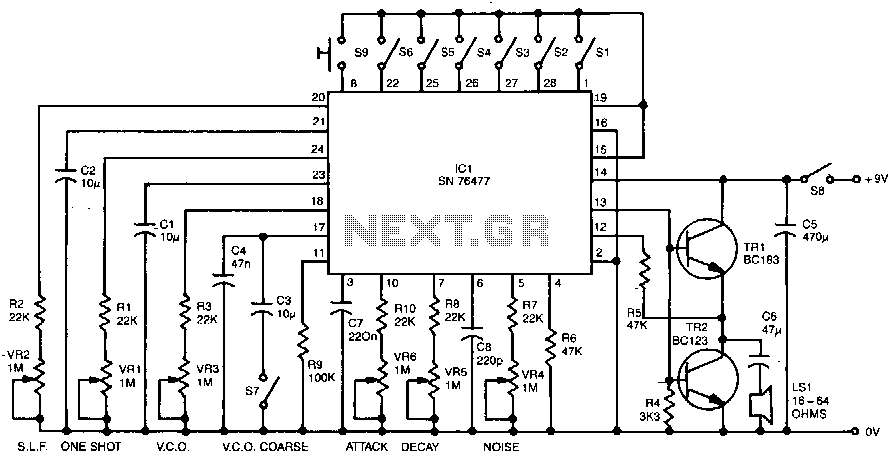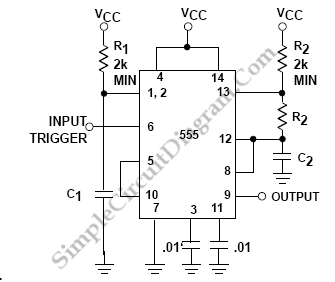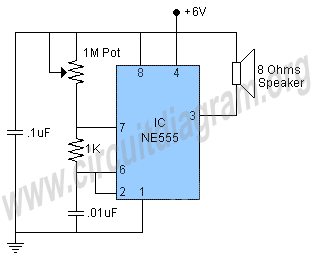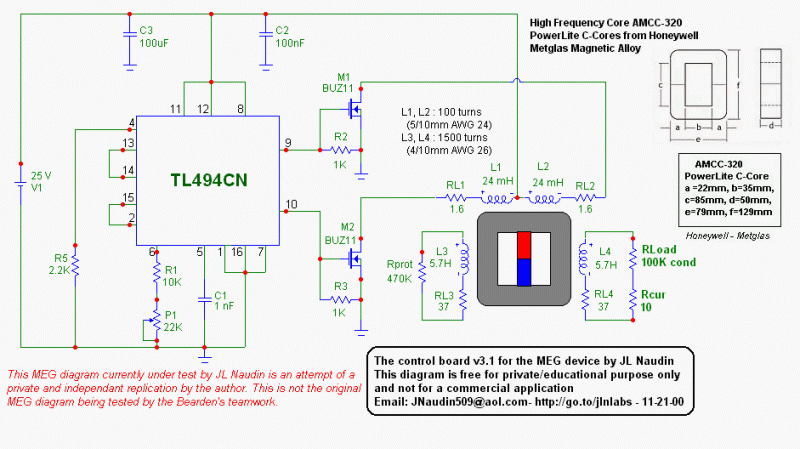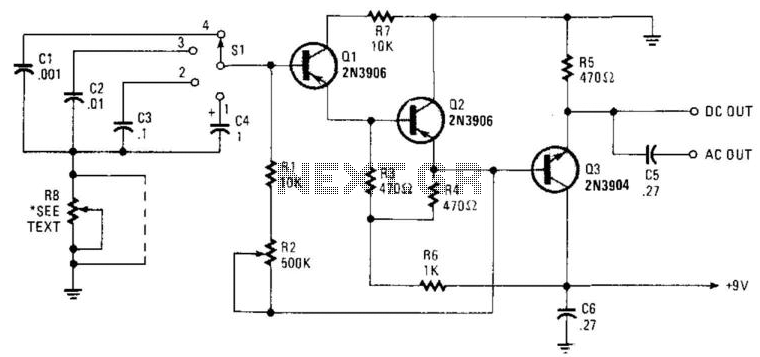
Building a Sweep Generator for BK 4011
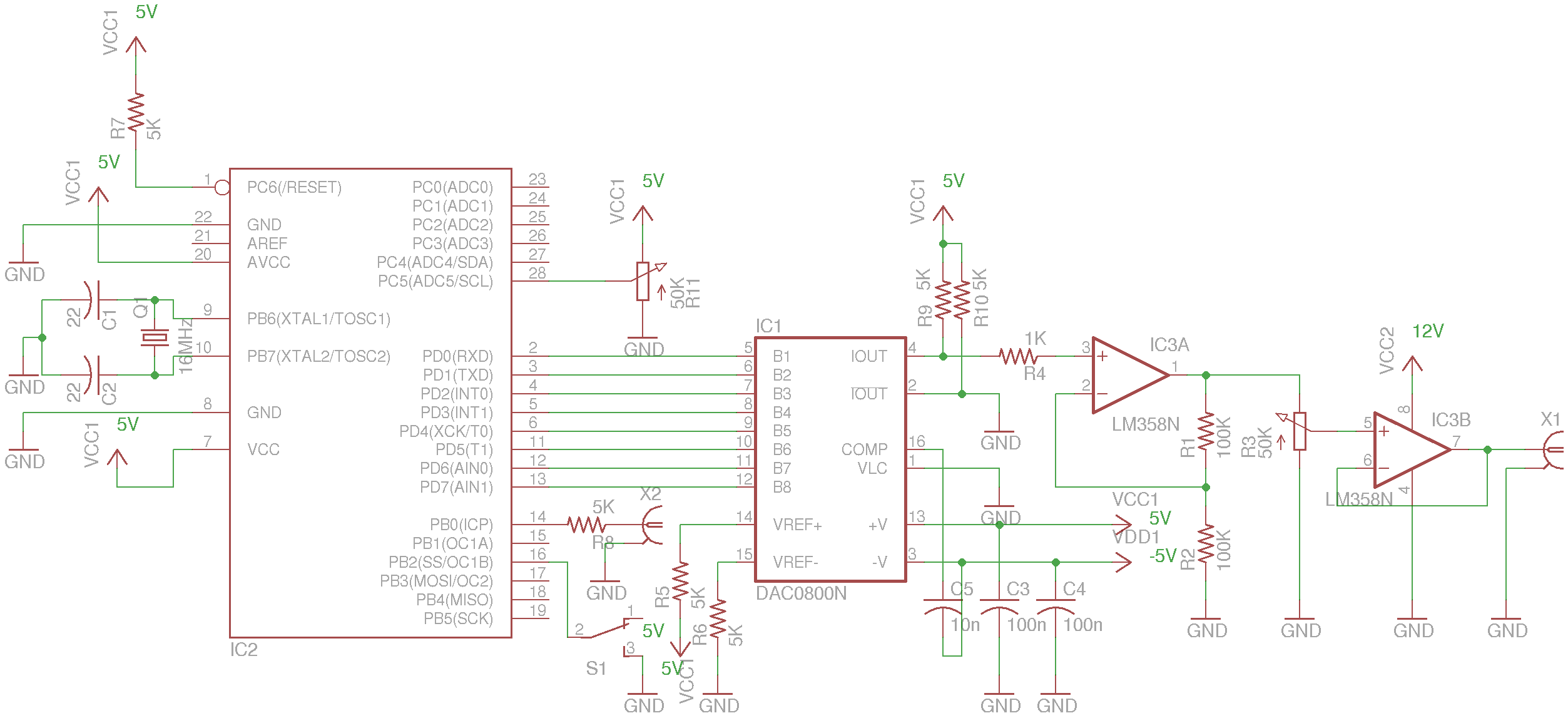
A teardown of a BK Precision 4011 5MHz function generator revealed that, like most basic function generators from earlier times, the BK 4011 does not include frequency sweep as a standard option. However, it does feature a VCG (Voltage Controlled Generator) input, which functions as a VCO (Voltage Controlled Oscillator) and can be utilized alongside an external sweep generator to create frequency sweeps. This document presents a simple sweep generator designed to produce both the sweep waveform and synchronization signals necessary for any function generator equipped with a VCG/VCO input. The sweep frequency can be adjusted from below one Hertz to several kilohertz, and the sweep waveform can toggle between linear and logarithmic modes. Additionally, the design can be adapted to accommodate various arbitrary waveforms. Central to this sweep generator is the 8-bit parallel-input DAC, the DAC0800. This digital-to-analog converter is driven by an MCU (Atmega328P), which generates the sweep waveform. The choice of a parallel DAC is primarily for its speed; although the DAC0800 is an older component, it operates at a sufficiently fast speed suitable for waveform generation. It is also cost-effective and straightforward to implement. In contrast, modern DACs that employ serial protocols (e.g., SPI/I2C) tend to be significantly more expensive for comparable operational speeds. One limitation of the DAC0800 is its requirement for dual supply rails for proper operation. While there are methods (TI AN-1525) to employ the DAC0800 with a single supply, these methods introduce considerable complexity into the circuit design. To maintain simplicity, a dual supply configuration was adopted. The negative voltage necessary for the DAC0800 is provided by Maxim's MAX889 inverting charge pump. Given that the BK 4011's VCG input range is 0-10V, the output from the DAC0800 is amplified by a non-inverting Op-Amp configured for a gain of 2. This amplified signal is then attenuated using a potentiometer to achieve the full VCG voltage range. Subsequently, the attenuated sweep waveform is buffered through another Op-Amp. The dual Op-Amp used in this design is the LM358; however, as it is not a rail-to-rail Op-Amp, the actual adjustable output voltage range is slightly restricted and does not reach 0V. For this basic sweep generator, this limitation is generally acceptable. The complete code listing is provided below. The code was compiled using Arduino version 1.0.1, but it is expected to be compatible with most Arduino IDE versions. The TimerOne library can be obtained from the specified source.
The schematic for the described sweep generator includes the following key components and connections. The Atmega328P microcontroller serves as the control unit, interfacing with the DAC0800 to generate the desired sweep waveform. The DAC0800 is connected to the microcontroller via an 8-bit data bus, utilizing PORTD for parallel data transfer, which allows for rapid updates to the DAC. The MAX889 charge pump provides the necessary negative voltage supply for the DAC0800, ensuring its operation within the required voltage specifications.
The output from the DAC0800 is first amplified by an LM358 Op-Amp configured in a non-inverting arrangement with a gain of 2, effectively doubling the voltage range. Following amplification, a potentiometer is incorporated to allow for fine-tuning of the output voltage, ensuring compatibility with the BK 4011's VCG input specifications. The final output is buffered through a second LM358 Op-Amp to maintain signal integrity and drive capability.
The microcontroller's firmware is structured to allow for real-time adjustments of the sweep frequency and mode, enabling the selection between linear and logarithmic sweep profiles. The TimerOne library is utilized to manage timing for the waveform generation, with interrupt-driven routines to facilitate the synchronization signal generation required by the function generator.
In summary, this circuit design provides a versatile and efficient solution for generating sweep waveforms compatible with the BK Precision 4011 function generator, leveraging the capabilities of the DAC0800 and the Atmega328P microcontroller to achieve the desired performance characteristics.A teardown of a BK Precision 4011 5MHz function generator a few weeks ago. Like most of basic function generators in old days, BK 4011 does not offer frequency sweep as an option. What it does include is a VCG (Voltage controlled Generator) input, which essentially is just a VCO and it can be used in conjunction with an external sweep genera
tor to generate frequency sweeps. In this post I will show you a simple sweep generator I built. It can be used to generate both the sweep waveform and synchronization signal needed for any function generator that has a VCG/VCO input. The sweep frequency can be adjusted from under a Hertz to several kHz. The sweep waveform can be switched between linear and logrithm modes and can be easily extended to accommodate other arbitrary waveforms.
At the core of this sweep generator lies an 8-bit parallel-input DAC DAC0800. This digital to analog converter is driven by an MCU (Atmega328P) which generates the sweep waveform. The reason that I used a parallel DAC in this situation is for its speed. While DAC0800 is a rather old chip, it can operate at a relatively fast speed which makes it suitable for waveform generation use.
It is also very inexpensive and easy to use. Modern DACs using serial protocols (e. g. SPI/I2C) on the other hand, can cost significantly more for the same operation speed. One draw back of using DAC0800 is that it requires dual supply rails for operation. While there are ways ( TI AN-1525 ) to use DAC0800 with a single supply, they add quite a bit of complexity to the circuit design. So to keep everything simple, I followed the dual supply route. To provide the negative voltage required by DAC0800 I used Maxim`s MAX889 inverting charge pump. Because BK 4011 ²s VCG input range is 0-10V, the output from DAC0800 is amplified by a x2 non-inverting Op-Amp.
And the output from the x2 amplifier is then attenuated by a potentiometer to obtain the full VCG voltage range. Finally, the attenuated sweep waveform is buffered through another Op-Amp. The dual Op-Amp chip used here is LM358, since it is not a rail-to-rail Op-Amp, the actual adjustable output voltage range is slightly less and will not reach 0V.
For this simple sweep generator, this limitation shouldn`t matter much. The full code listing is shown below. The code was compiled using Arduino 1. 0. 1, but it should be compatible with pretty much all Arduino IDE versions. The TimerOne library can be downloaded from here. #include #include const int sweepModePin = 10; const int syncPulsePin = 8; const int freqValPin = 5; //analog pin 5 const int LINEAR_SWEEP = LOW; const int LOG_SWEEP = HIGH; int sweepMode = LINEAR_SWEEP; int freqVal, freqValOld; int sweepInterval = 1; void setup() { pinMode(syncPulsePin, OUTPUT); digitalWrite(syncPulsePin, LOW); pinMode(sweepModePin, INPUT); digitalWrite(sweepModePin, HIGH); freqVal = analogRead(freqValPin); freqValOld = freqVal; sweepInterval = 1 + freqVal; Timer1. initialize(sweepInterval); Timer1. attachInterrupt(timer1Callback); delay(500); DDRD = 0xff; //set pin 0 through 7 as output } byte b = 255; void loop() { sweepMode = digitalRead(sweepModePin); freqVal = analogRead(freqValPin); if (abs(freqVal - freqValOld) > 5) { freqValOld = freqVal; sweepInterval = 1 + freqVal; Timer1.
initialize(sweepInterval); } } void timer1Callback() { if (sweepMode = LOG_SWEEP) { PORTD= EEPROM. read(b); b+; if (b=255) { b=0; //generate a synchronization signal PORTB |= 1; delayMicroseconds(10); PORTB &= 0xFE; } } else if (sweepMode = LINEAR_SWEEP) { b-; PORTD=255-b; if (b=0) { b=255; //generate a synchronization signal PORTB |= 1; delayMicroseconds(10); PORTB &= 0xFE; } } } Note that PORTD (digital pin 0 through digital pin 7) is used to drive the 8 bit DAC data line. This is the fastest way to manipulate the DAC as the bits in the same port can be altered in a single operation.
Since Pin 0 and Pin 1 are for serial co 🔗 External reference
The schematic for the described sweep generator includes the following key components and connections. The Atmega328P microcontroller serves as the control unit, interfacing with the DAC0800 to generate the desired sweep waveform. The DAC0800 is connected to the microcontroller via an 8-bit data bus, utilizing PORTD for parallel data transfer, which allows for rapid updates to the DAC. The MAX889 charge pump provides the necessary negative voltage supply for the DAC0800, ensuring its operation within the required voltage specifications.
The output from the DAC0800 is first amplified by an LM358 Op-Amp configured in a non-inverting arrangement with a gain of 2, effectively doubling the voltage range. Following amplification, a potentiometer is incorporated to allow for fine-tuning of the output voltage, ensuring compatibility with the BK 4011's VCG input specifications. The final output is buffered through a second LM358 Op-Amp to maintain signal integrity and drive capability.
The microcontroller's firmware is structured to allow for real-time adjustments of the sweep frequency and mode, enabling the selection between linear and logarithmic sweep profiles. The TimerOne library is utilized to manage timing for the waveform generation, with interrupt-driven routines to facilitate the synchronization signal generation required by the function generator.
In summary, this circuit design provides a versatile and efficient solution for generating sweep waveforms compatible with the BK Precision 4011 function generator, leveraging the capabilities of the DAC0800 and the Atmega328P microcontroller to achieve the desired performance characteristics.A teardown of a BK Precision 4011 5MHz function generator a few weeks ago. Like most of basic function generators in old days, BK 4011 does not offer frequency sweep as an option. What it does include is a VCG (Voltage controlled Generator) input, which essentially is just a VCO and it can be used in conjunction with an external sweep genera
tor to generate frequency sweeps. In this post I will show you a simple sweep generator I built. It can be used to generate both the sweep waveform and synchronization signal needed for any function generator that has a VCG/VCO input. The sweep frequency can be adjusted from under a Hertz to several kHz. The sweep waveform can be switched between linear and logrithm modes and can be easily extended to accommodate other arbitrary waveforms.
At the core of this sweep generator lies an 8-bit parallel-input DAC DAC0800. This digital to analog converter is driven by an MCU (Atmega328P) which generates the sweep waveform. The reason that I used a parallel DAC in this situation is for its speed. While DAC0800 is a rather old chip, it can operate at a relatively fast speed which makes it suitable for waveform generation use.
It is also very inexpensive and easy to use. Modern DACs using serial protocols (e. g. SPI/I2C) on the other hand, can cost significantly more for the same operation speed. One draw back of using DAC0800 is that it requires dual supply rails for operation. While there are ways ( TI AN-1525 ) to use DAC0800 with a single supply, they add quite a bit of complexity to the circuit design. So to keep everything simple, I followed the dual supply route. To provide the negative voltage required by DAC0800 I used Maxim`s MAX889 inverting charge pump. Because BK 4011 ²s VCG input range is 0-10V, the output from DAC0800 is amplified by a x2 non-inverting Op-Amp.
And the output from the x2 amplifier is then attenuated by a potentiometer to obtain the full VCG voltage range. Finally, the attenuated sweep waveform is buffered through another Op-Amp. The dual Op-Amp chip used here is LM358, since it is not a rail-to-rail Op-Amp, the actual adjustable output voltage range is slightly less and will not reach 0V.
For this simple sweep generator, this limitation shouldn`t matter much. The full code listing is shown below. The code was compiled using Arduino 1. 0. 1, but it should be compatible with pretty much all Arduino IDE versions. The TimerOne library can be downloaded from here. #include
initialize(sweepInterval); } } void timer1Callback() { if (sweepMode = LOG_SWEEP) { PORTD= EEPROM. read(b); b+; if (b=255) { b=0; //generate a synchronization signal PORTB |= 1; delayMicroseconds(10); PORTB &= 0xFE; } } else if (sweepMode = LINEAR_SWEEP) { b-; PORTD=255-b; if (b=0) { b=255; //generate a synchronization signal PORTB |= 1; delayMicroseconds(10); PORTB &= 0xFE; } } } Note that PORTD (digital pin 0 through digital pin 7) is used to drive the 8 bit DAC data line. This is the fastest way to manipulate the DAC as the bits in the same port can be altered in a single operation.
Since Pin 0 and Pin 1 are for serial co 🔗 External reference
Warning: include(partials/cookie-banner.php): Failed to open stream: Permission denied in /var/www/html/nextgr/view-circuit.php on line 713
Warning: include(): Failed opening 'partials/cookie-banner.php' for inclusion (include_path='.:/usr/share/php') in /var/www/html/nextgr/view-circuit.php on line 713
